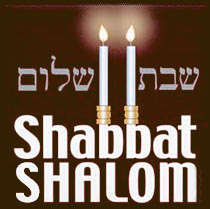Ki Tavo
This week's reading is introduced with the topic of ‘Bikurim’, the mitzvah to bring the first fruits to the Beit Hamikdash (temple). The first fruits are brought from the seven species for which the Land of Israel is famous for – wheat, barley, grapes, figs, pomegranates, olives and dates.
When a landowner would notice that the first fruit of any of the aforementioned kinds started to ripen in his field or orchard, he would tie a thread around it and mark it as Bikurim. He would wait for all the different kinds of fruits to ripen and then takes them all together to the temple.
The mitzvah of Bikurim is a great example of the Jewish people’s efforts to beautify the mitzvot. Only a deep love for the mitzvah could transform the commandment ‘’to bring the first fruits to the Beis Hamikdash’’ into a glorious undertaking. It was a festive procession to Jerusalem, they would recite biblical scripture which was accompanied by music, and the first fruits were given to the Kohanim. It was a ceremony expressing recognition that it is G-d who guides the history of the Jewish People throughout all ages.
As well as the mitzvah of the ‘first fruits’ the Torah reading this week includes a mass number of blessings and curses which could befall the Jewish people if they keep or stay away from the Torah. The blessing and curses were initially pronounced at Mt Gerizim and Mt Aival, during Moshe’s last few days of life, six of the tribes stood at Mt Aival – Reuvain, Gad, Asher, Zevulin, Dan and Naftali and the other 6 tribes stood at Mt Gerizim – Shimon, Laivi, Yehuda, Yissachar, Yosaif and Binyamin.
This is one of two parshah's in the Torah which consists of many curses and blessings - we learned of many curses in parshat Bechukotai, and 98 curses are stated in this week’s reading.
However the difference between the two parshah’s is that in Parshat Bechukotai, the curses related to what was going to happen during the destruction of the first temple and this week’s reading relates mainly to curses that were fulfilled during the second temple destruction era.
Earlier on in the parshah, the Torah relates the mitzvah of the inscribing of the Torah on large stones when the Jewish people were to enter in the land of Israel. This actually happens and is related in the book of Joshua.
By G-d’s commandment, Moshe set up twelve large stones and had the Torah inscribed on them in seventy languages. This teaches us that whatever language one is familiar to, they can still occupy much time learning Torah! Wherever any Jew goes in life, they always take the Torah with them and the mitzvot required to be kept!!
In fact, in the book of Joshua, we see how the Torah was inscribed in seventy different languages on 12 stones in the area of ‘Gilgal,’ this was to be the Jews first station in the land of Israel.
The parshah concludes with Moshe re-emphasizing that G-d performed all the miracles in Egypt and in the wilderness to motivate the Jews to keep the Torah.
The Haftorah in this week’s torah reading comes from the book of Isaiah chapter 60. As Ellul is continuing it is a time for the Jews to do Teshuva and improve themselves in all areas of life needed.
THis week's Dvar Torah is dedicated to Ahuva Bat Chiryah Chaya to make a full refuah shelaima.

 Share on Twitter
Share on Twitter Visit our Facebook page
Visit our Facebook page